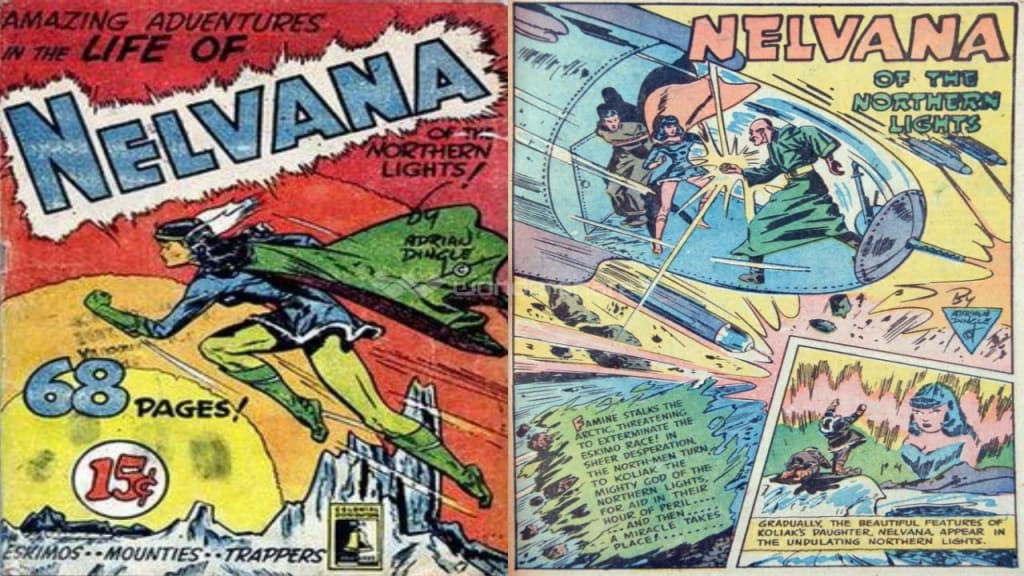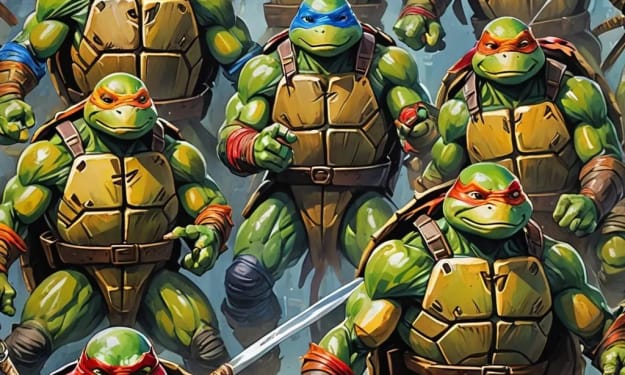1941
Lady Comic Book History Podcast

As always if you would rather listen then read to the 1,500 words that are about to happen here please check out the Lady Comic Book History podcast. We start our discussion of 1941 with Black Cat, a comic heroine featured in Harvey Comics from 1941-1951 and was a part of the reprints in the mid-50s and early 60s. The Black Cat made her debut in the first issue of Pocket Comics in August 1941. Earning her own title in 1946 it ran for 29 issues before changing names several times from Black Cat Western Comics, Black Cat Mystery Comics, Black Cat Western Mystery, and Black Cat Mystery before going back to the simple Black Cat for it's final 3 issues #63-#65.
Black Cat’s real identity is Linda Turner, the daughter of a silent film western actor and a former Hollywood stuntwoman. Linda who went from stuntwoman to actress found herself caught up in the crime fighting life when she suspects her films director of being a Nazi spy. She dons a blue blouse, red shorts, gloves, red buccaneer boots, and a blue opera mask and calls herself The Black Cat. While following her director Black Cat meets Rick Horne, a reporter who got a tip about a Nazi spy ring in LA. Forced to work together they discover that Garboil has been planting secret information in his motion pictures. When her outfit was modified it became a one piece swimsuit with the buccaneer boots, because how else would a woman be expected to fight crime? Please sense the eye roll.
1941 also brought us Mrs. America, a Marvel Comics creation that made her debut in Marvel Mystery Comics issue #49 created by writer Otto Binder and artist Al Gabriele for Timely Comics before it became Marvel.
Quality Comics had featured an unrelated character called Miss America in Military Comics in 1941-1942. Following only 2 appearances in Marvel Mystery, Miss America was granted her own comic Miss America Comics in early 1944. Stan Lee hired artist and friend Pauline Loth to do the animation for the first Miss America book, making her one of the first female comic book artists.
However the series changed formats with it's second issue, becoming a magazine style combined with traditional comic book style. In only it's second issue the publication regulated it's hero to a secondary role and began to focus on teen-romance comics and articles featuring topics on cooking, fashion, and makeup...so essentially Marvel thought the only way to appeal to a more female audience was to push stereotypical femenine roles instead of just created a female hero that women could relate to.
Miss America was really Madeline Joyce born in Washington D.C. the niece of James Bennet who was pronsering a Professor Lawson who was a scientist who claimed to have gotten superpowers through a device that had been struck by lightning. Joyce secretly tampered with the device during a thunderstorm and gained herself the ability to fly and great strength. In addition to her “solo series” of which I put in air quotes being that her solo series was more about forcing her to the background in order to push traditionally sexist content. She also made regular appearances in Marvel Mystery Comics and All Winners Comics. She even fought alongside Captain America and Bucky Barnes, the original human torch, the Sub-Mariner and the Whizzer. She made her final appearance in Marvel Mystery Comics #85 in February in 1948.
It was revealed that Joyce was married to the Whizzer, and because the couple had been exposed to radiation their first child was a radioactive mutant and Joyce died in childbirth with their stillborn second child. It was also suggested around this time that they were the parents of Scarlet Witch and Quicksilver which was of course not the case. In 1976 Miss America was retconned as a member of the Liberty Legion where she battled the Red Skull, and the Nazi super team.
Miss America’s powers include; Flight, Enhanced Endurance, the Strength of a Thousand Men and originally possessed x-ray vision but this power faded over time leaving her with a need for glasses.
Quality Comics publishes Phantom Lady created by the Eisner and Iger studio, the character’s early appearances were drawn by Arthur Peddy. The character perfectly fed into the very sexist role of what was referred to as “good girl art” that would depict female characters with massive boobs in provocative situations and pin up poses.
Phantom Lady made her first appearance in Quality comics first issue of Police Comics in August of 1941. The initial issue established her alter ego as Sandra Knight. Dressed in a skimpy costume that was literally justified by the publisher by claiming that it was a deliberate tactic to distract male foes...one of the only people of the time to actually recognize the misogynistic undertones of the Phantom Lady’s entire existence was Dr. Fredric Wertham who published a book in 1954 titles Seduction of the Innocent denouncing what he viewed as the morally corrupting effect on comics on children, which is kind of like equating video games to a rise in violence and criminal behavior, however he id make a few decent observations including a Phantom Lady cover which showed her attempting to escape ropes in, of course, an overly sexualized manner. This illustration was presented by Wertham with the caption that read “sexual stimulation by combining headlights with the sadists dream of tying up a woman” The Phantom Lady changed publishers several times from Star Publications, Ajax-Farrell Publications, Charlton Comics and I.W. Publications before finding a home with D.C. Comics.
In 1956 DC Comics reintroduced the character as a member of the Freedom Fighters in JLA #107 in October of 1973. As was done with many of the characters DC acquired from other publishers the Freedom Fighters were relocated to one of DC’s many parallel worlds, this particular was known as Earth-X, the team was later featured in it's own series for 15 issues where they temporarily left Earth-X for Earth-1.
In 1981 Phantom Lady became a recurring guest star of All-Star Squadron, a superhero team title set on Earth-2...I apologize for all the alternate universes, DC is kind of the schizophrenic, associative personality disorder having brother of Marvel. They really struggle with execution to the point of having to create multiple alternate universes that exist on a constant rotating basis making it impossible to keep characters and their origins straight. They attempted to fix this in Crisis on Infinite Earths where the Phantom Lady also appears.
The second Phantom Lady Delilah Dee Tylerwas introduced in Action Comics Weekly #636 in January of 1989. Tyler was trained by the original Phantom Lady, the aging and elderly Sandra Knight. This successor Phantom Lady never received a series of her own, but was a guest star in other titles such as Starman, and Flash.
The third iteration of Phantom Lady, Stormy Knight, was introduced in Crisis: Aftermath: The Battle for Bludhaven in 2006, she appears in the limited series Uncle sam and the Freedom Fighters. This version of the character does not hold onto a secret identity and she also became a cold-blooded killer, though she finds herself defending her actions she is also disturbed by what she is being forced to do.
Yet another version of the character is Jennifer Knight who was the identity for the launch of the new ongoing comic book that took off in May of 2012. She was part of the Second Wave of DCs continuity reboot and entire-line relaunch.
The last of our secondary comic book heroines created in 1941 was Nelvana of the Northern Lights. The character was created, written and illustrated by Adrain Dingle who took inspiration from tales brought back from the Arctic by Group of Seven Painter Franz Johnston. Nelvana’s superpowers included turning invisible and traveling at the speed of light along a ray of the Northern Lights. She visited lost kingdoms under the ice, journeyed to other dimensions and fought against the axis powers in WW2 eventually taking the secret identity of secret agent Alana North. Nelvana of the North made her debut in the first issue of Triumph-Adventure Comics published by Hillborough Studios in August of 1941. She made her final appearance in Super Duper Comics #3 in May of 1947.
Nelvana is a powerful Inuit mythological figure, who much like Sheena uses her powers to protect her people.Nelvana is the daughter of a mortal woman and a God Koliak the Mighty king of the northern lights. The Gods outraged with Koliak and his marriage to a mortal made him no longer visible. Although his spirit manifested in the form of the Northern Lights, Nelvana draws on the powers of her father and the Northern Lights to fight Nazi’s in the North.
Nelvana was Canada’s first distinctly Canadian female superhero and she mitigated the lack of Canadian comic book heroes. Canada was finally in on the American Dominated comic book industry. She also affected the creation of other comic characters, Marvel comics Canadian super-heroine Snowbird is a demi-goddess whose mother is Nelvanna of the Northern Lights.
About the Creator
Alexandrea Callaghan
Certified nerd, super geek and very proud fangirl.






Comments
There are no comments for this story
Be the first to respond and start the conversation.